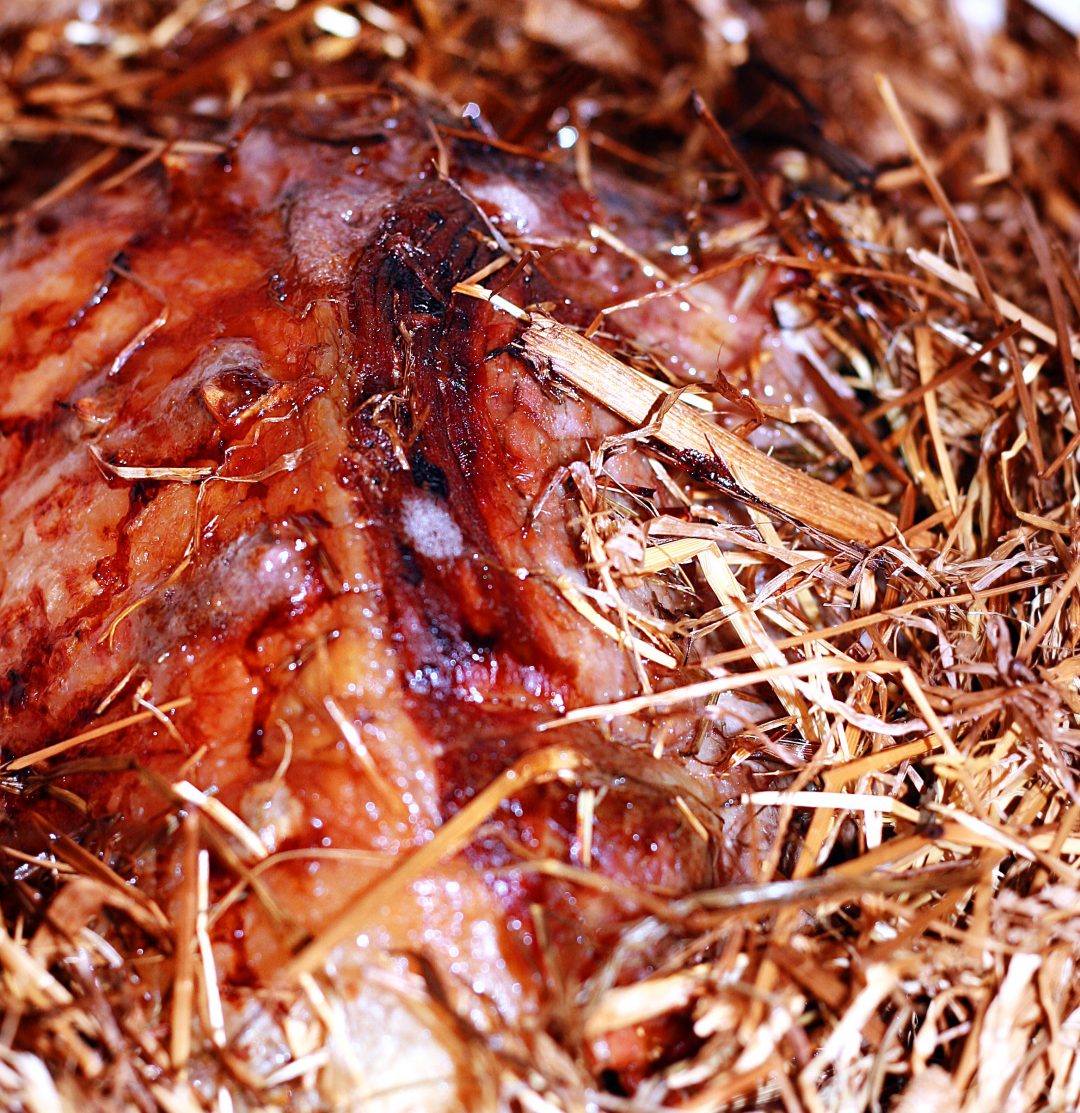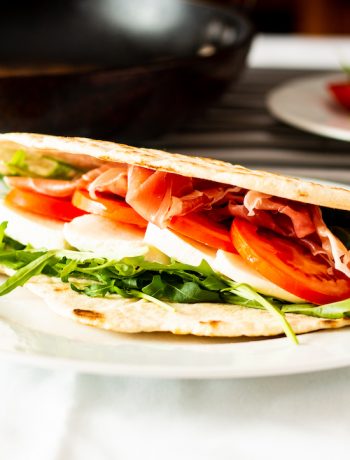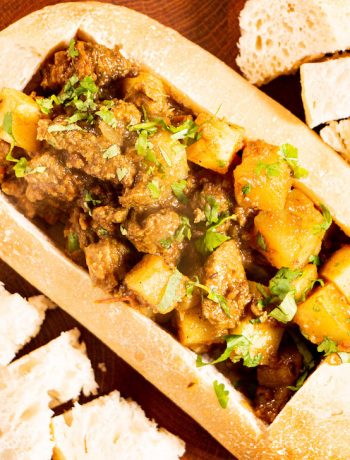Hurrah its June! What’s so special about that? Perhaps you’re excited because it is the first month of summer, or the month in which Wimbledon is played? Well, in The Nosey Chef kitchen we are excited because it happens to be the month when lamb is at its most tender. Whilst the flavour continues to mature, as we head towards autumn, the meat will never be as succulent as it is now. So throughout the month we will be sharing some of our favourite lamb recipes with you, from shoulders and legs, to leftovers.
Let’s begin with a recipe that uses just a few ingredients and, as it turns out, a rather ancient method of cooking that lets the quality and flavour of the meat speak for itself. When I announced that I was going to cook a leg of lamb in hay, I received the predicted barrage of abuse from my culinary partner in crime:
“Someone’s been watching Masterchef.”
… came the derisory response. Here’s the irony – it is due to such televised culinary entertainment that cooking with hay has enjoyed the limelight over recent years, from infusing oils, to drying it out and grinding it up as a garnish – I kid you not. But, Paul Bocuse often referred to as the ‘grand–pére’ of French gastronomy first published jambon au foin (ham cooked with hay) in his 1977 book Paul Bocuse’s French Cooking. The major change that has occurred is that hay has undergone the transition from a convenient source of fuel for the cooking fire (as far back as Medieval times, and a good way of using up old grass) to being something that is used to impart flavour to food in its own right.
In the course of my research I came across a number of different recipes. Some soaked the hay in water before adding it to the pot, resulting in a more pungent flavour being imparted to the meat. Others advocate the use of dry hay, which results in a lighter, slightly smoky flavour, that is closer to fresh mown grass on a summers day, than it is to rain sodden hillside in Devon. This is a claim that I can make with a degree of authority, having previously lived in Devon, in probably one of the wettest locations in the UK. Other variations on a theme include studding the meat with garlic, or not, and even the addition of lavender. In the end I settled for this offering from British chef, James Martin.
Leg of lamb in hay
Ingredients
- 1 whole bulb of garlic
- 1 leg of lamb, approximately 3kg, on the bone
- Rapeseed oil
- Freshly ground salt and pepper
- 1 bag of eating hay
Instructions
Preheat the oven to 180ºC.
Break the garlic bulb into individual cloves and remove the skin. This can be achieved quickly by placing a few cloves at a time into a jam jar and shaking vigorously for a few seconds with the lid on. The skin should simply fall away. Slice each clove lengthways into thin slivers.
With a sharp narrow bladed knife (a filleting or boning knife is perfect) make multiple small vertical cuts, using a stabbing motion, all over the leg of lamb. Insert a single sliver of garlic into each cut and push deep into the meat. Rub the meat generously with oil and season.
Place a large oven proof casserole over a medium heat. When it is hot place the a few generous handfuls of hay in the pan. When it begins to smoke, place the leg of lamb on top. The hay should come approximately halfway up the leg of lamb. Cover with a lid and place into the oven for about 2 hours.
Increase the heat to 200ºC for another 30 minutes, or until the meat is cooked to your liking. Allow to rest, in the hay, for about 10 minutes.
Lift out the leg, brush off the hay and serve. You may opt for traditional accompaniments such as mint sauce.
Notes
In order to do your lamb justice, I implore you to make mint sauce fresh using mint, sugar and malt vinegar. You may also want to try other accompaniments such as redcurrant jelly, or my favourite, medlar jelly.







No Comments